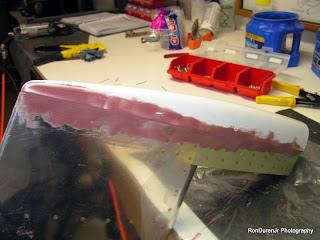I have been working on the tips here and there. They're looking nice, I think I am going to like the finished results. I'll post more on this later as I near completion.
So, when not building, the next best thing is dreaming/planning paint schemes, cockpit designs and avionics. Which, I gotta say, is quite fun! The avionics out there on the market for kit built planes is utterly amazing these days. I plan to have a 'glass' cockpit in my plane. For several reasons: #1, I have flown a G1000 and am amazed at the added safety these systems CAN add to your flying. You still need to practice good situational awarenesss and see and avoid techniques, but adding the features a glass panel provides is key for safe flying. #2, glass cockpits are definitely the future of aviation. And #3, I am a 'tech geek' and these glass panels are really cool!
I am considering several MFD (Multi Function Display) and PFD (Primary Flight Display) options. I think I have narrowed it down to two companies.
Second is the new Dynon Skyview. This just came out this year at Sun-n-Fun. Dynon has been around in the kitplane market for quite some time and most of the guys have had nothing but good things to say about them. Namely, they seem to have great value for the money, homebuilders love that! :) I personally didnt like the look of their previous flight displays...frankly, they look kind of cheap. But this one changes that, the look of this new one is much more professional in its styling. It appears that Dynon is growing up and ready to play with the big boys in the market. That, along with their good track record in the homebuilt market, has me interested.
 Both of these have the capability of using SV (Synthetic Vision), which is on my wish list. This is when you can see the 'virtual' landscape of the geography you are flying over right on your flight display, no matter the visibilty outside. Another great safety feature to have and also the way of the future. You can see it in action on the Dynon video.
Both of these have the capability of using SV (Synthetic Vision), which is on my wish list. This is when you can see the 'virtual' landscape of the geography you are flying over right on your flight display, no matter the visibilty outside. Another great safety feature to have and also the way of the future. You can see it in action on the Dynon video. 




















